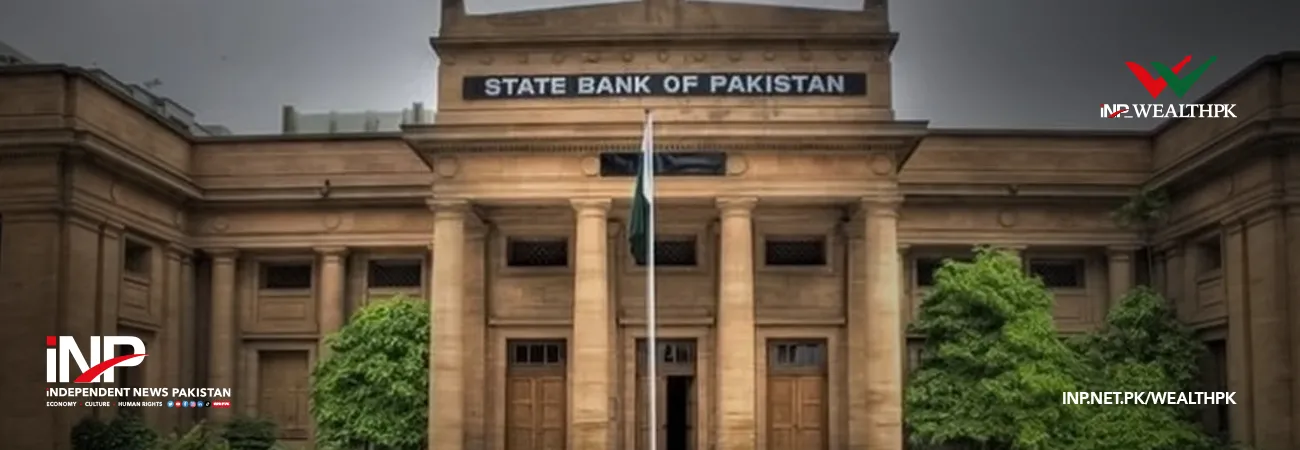INP-WealthPk
Farooq Awan
The State Bank of Pakistan’s Monetary Policy Committee (MPC) on Monday decided to keep the policy rate unchanged at 11 percent, emphasizing that the current stance remains appropriate for maintaining price stability while supporting the country’s economic recovery.
In its latest monetary policy statement, the MPC said headline inflation had risen to 5.6 percent in September 2025 from 3 percent in August, mainly because of flood-related disruptions in food supplies and higher energy prices. Core inflation, however, stayed steady at 7.3 percent, indicating that underlying demand pressures had not intensified.
The Committee noted that the overall macroeconomic outlook had improved since its previous meeting as the economic fallout of recent floods appeared smaller than initially feared. Crop losses were limited, supply chains remained largely intact, and high-frequency economic indicators showed continued momentum in industrial and services activity.
According to the MPC, real GDP growth for FY 2025 had been revised upward by the Pakistan Bureau of Statistics (PBS) to 3 percent from 2.7 percent. Major Kharif-crop estimates were reported close to last year’s production levels, supported by improved weather and input conditions. At the same time, the Committee pointed out several risks that warranted caution, including volatile global commodity prices, uncertain export prospects amid shifting tariff structures, and potential domestic food-supply frictions.
Given these mixed developments, the MPC judged that maintaining the policy rate at 11 percent would allow earlier monetary easing to transmit fully through the system while keeping real interest rates positive in line with the 5–7 percent medium-term inflation target. “The decision strikes a balance between supporting growth and ensuring that inflation expectations remain anchored,” the statement said.
The Committee also highlighted key positive developments since its last meeting: the IMF staff-level agreement on reviews of the Extended Fund Facility (EFF) and Resilience and Sustainability Facility (RSF); a continued build-up in foreign-exchange reserves despite a US $500 million Eurobond repayment; and easing inflation expectations among both consumers and businesses as captured in the SBP-IBA sentiment surveys.
The MPC reaffirmed that sustainable recovery required the simultaneous strengthening of external and fiscal buffers. It underscored that prudent coordination between monetary and fiscal authorities remained critical to absorbing future shocks without igniting inflation or pressuring the external account.
On the real-sector side, the statement said large-scale manufacturing expanded by 4.4 percent during July-August FY 2026 compared with a marginal contraction a year earlier. Strong growth in automobiles, cement, fertilizer, and petroleum products, along with rising private-sector credit demand and improved business confidence, reflected a broad-based pickup in activity. As a result, GDP growth in FY 2026 was expected to lie in the upper half of the earlier projected range of 3.25–4.25 percent.
The MPC maintained that external-sector indicators were stable. The current account recorded a surplus of $110 million in September 2025, containing the Q1-FY 2026 deficit to $594 million. While imports had risen in step with stronger activity, exports and remittances remained resilient, keeping the external gap manageable. Foreign-exchange reserves had increased to $14.5 billion by October 17 and are projected to reach $15.5 billion by December and $17.8 billion by June 2026.
Regarding inflation, the MPC said the recent upturn was milder than anticipated in earlier flood episodes, as seen in slower price increases for wheat, sugar, and perishables in high-frequency data. Inflation, however, was expected to remain above the upper bound of the target range for a few months in the second half of FY 2026 before easing toward target in FY 2027. The outlook would depend on global commodity trends, domestic energy adjustments, and food-price volatility.
Reiterating its medium-term policy path, the Committee concluded that continued fiscal discipline, careful management of external inflows, and structural reforms are essential to sustain disinflation and enable balanced growth. “The real policy rate remains adequately positive to stabilize inflation within the target range over the medium term,” the statement added.

Credit: INP-WealthPk












